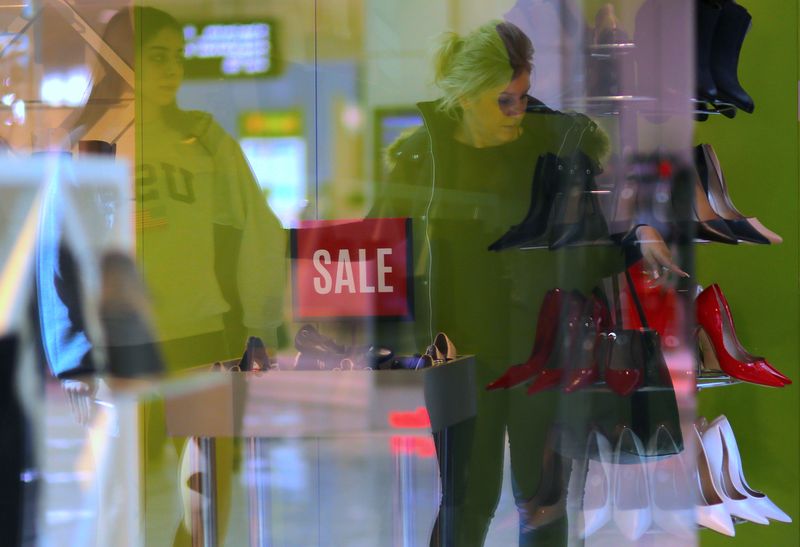By Stella Qiu
SYDNEY (Reuters) – Australian consumer price inflation slowed to a 3-1/2 year low in the third quarter, though the core measure was still sticky and reinforced market wagers that the central bank won’t start cutting rates until next year.
Overall, the report was rather mixed, with consumers benefiting from government rebates on electricity and a drop in petrol, while services price pressures persisted.
That kept market reaction muted, with the Australian dollar edging up 0.1% to $0.6569, while three-year bond futures slipped 1 tick to 96.06.
Investors slightly pared the chance of a rate cut from the Reserve Bank of Australia this December and next February to just 26% and 42%. Markets still see April next year as the most likely timing for the first easing.
Data from the Australian Bureau of Statistics on Wednesday showed the consumer price index (CPI) rose 0.2% in the third quarter, under forecasts of a 0.3% increase.
Annual inflation dropped to 2.8%, from 3.8%, taking it back into the RBA’s 2-3% target band for the first time since 2021, a result that was largely expected.
The slowdown was driven by a 17.3% drop in electricity prices due to the government’s subsidies, while petrol fell 6.2% in the quarter.
Policymakers are more focused on core inflation and the trimmed mean measure increased by 0.8% in the quarter, just above forecasts of a 0.7% gain. The annual pace though slowed to 3.5% from 4.0%.
“The ABS data shows that the price pressures that remain in the economy like rents, insurance premiums, and medical services, are predominately supply-side issues,” said Stephen Smith, Deloitte Access Economics partner.
“These cannot be subdued by further increases to the cash rate, supporting our view that interest rate hikes have done their job in slowing the economy and quashing demand-led inflation.”
Services inflation remains a source of concern for the RBA, staying elevated at 4.6% in the third quarter, slightly higher than the June quarter’s 4.5%, and little changed over the past 12 months.
The central bank will have an updated set of economic forecasts when it decides on its next policy move on Tuesday.
POSITIVE IMPULSE
For September alone, CPI rose a muted 2.1% compared with a year earlier, the lowest since July 2021. The trimmed mean measure slowed to 3.2%, just a touch above the top of the target band.
The RBA has held its policy steady since November, judging the current cash rate of 4.35% – up from 0.1% during the pandemic – is restrictive enough to bring inflation to its target band of 2-3% while preserving employment gains.
The labour market has stayed surprisingly resilient, an argument against early rate cuts. But the easing in annual core inflation comes ahead of the RBA’s projection for it to slow to 3.5% by the end of the year.

“Although quarterly trimmed mean CPI is not yet rising at pace consistent with the RBA’s target range, we think it will do so before long,” Abhijit Surya, Australia and New Zealand Economist at Capital Economics.
“That should pave the way for the Bank to begin easing policy at its meeting next February,” said Surya.
































